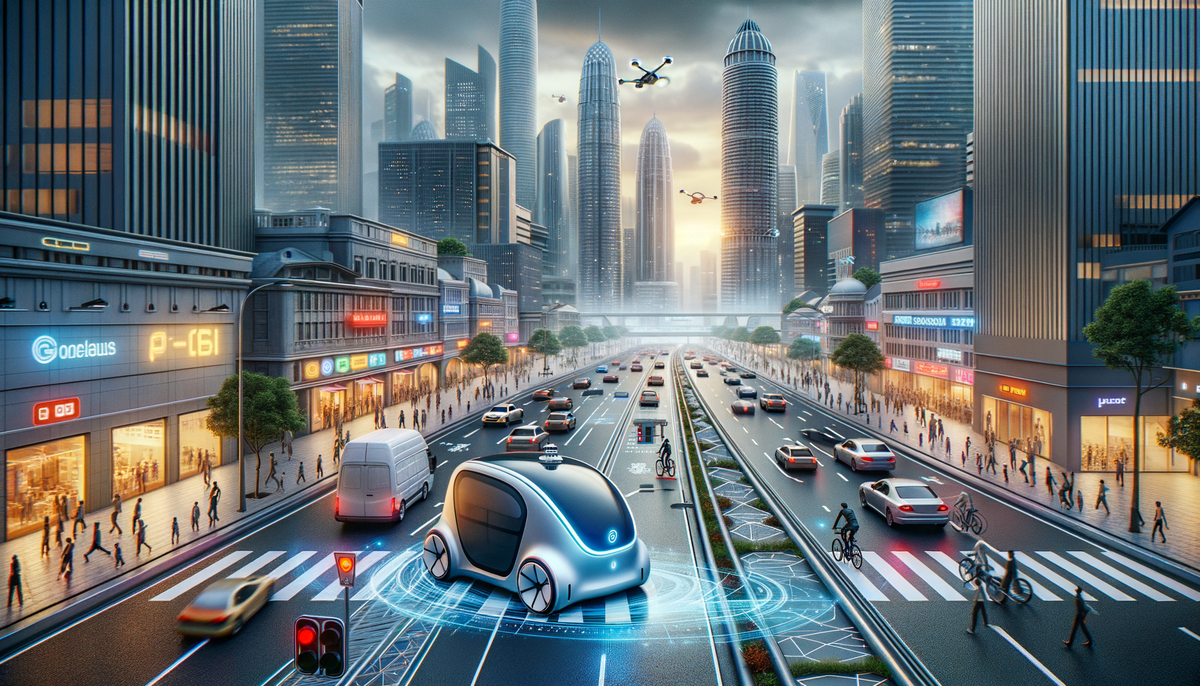Waymo: Revolutionizing Modern Transportation Amidst Community Challenges
Explore the newest challenges and innovations in Waymo's journey to redefine urban transportation with autonomous vehicles.

Waymo: Revolutionizing Modern Transportation Amidst Community Challenges
Understanding the Waymo Phenomenon
In the ever-evolving realm of transportation technology, Waymo stands as a beacon of innovation, spearheading the autonomous vehicle revolution. As a subsidiary of Alphabet Inc., Waymo began its journey in 2009 as the Google Self-Driving Car Project. Its mission is clear: to make transportation safer and more accessible by developing robust self-driving technologies. This initiative not only aims to reduce the staggering 1.4 million traffic-related deaths annually but also seeks to provide efficient and sustainable mobility solutions worldwide.
Waymo's Technological Journey
Waymo has been at the forefront of groundbreaking advancements in autonomous driving technology since its inception. From the modified Toyota Prius vehicles of 2009 to achieving the world's first fully autonomous ride without a steering wheel in 2015, the company has indeed charted a fascinating course. Formally established as an independent enterprise under Alphabet in 2016, it has since launched Waymo One, an autonomous ride-hailing service, and Waymo Via, extending its technological prowess to commercial goods transportation.
Waymo's Expansion and Community Backlash
Rapid expansion into urban settings such as Phoenix, San Francisco, and Los Angeles signals Waymo's commitment to scaling its technological influence. Recently, however, the company's advancements have faced socio-environmental challenges, particularly highlighted by residents in Santa Monica who have raised concerns about a Waymo charging station in their neighborhood. According to reports by KTLA, there have been numerous complaints regarding noise and increased traffic congestion caused by Waymo's operations in the area, disrupting the residents’ daily lives.
In addition, the Santa Monica Daily Press highlights that these issues have prompted the local community to seek municipal intervention for better integration of this technology into their lives. Both reports emphasize the necessity for Waymo to engage more with communities to mitigate such impacts effectively.
Technological Impacts and Community Relations
While Waymo’s technological advancements indeed present promising prospects, they must also carefully consider community integration and environmental impact. Lessons from Santa Monica shed light on the broader implications of urban deployment of autonomous technology. As CBS News elaborates, Waymo’s innovations are foundationally exciting, yet practical steps are necessary for harmonizing community relationships.
Recommendations for Waymo and Industry Stakeholders
For industry professionals and Waymo stakeholders, the key takeaway from these developments is the critical need for stakeholder engagement and environmental considerations early in the project's life cycle. Collaborating with city planners and local communities can foster adaptive solutions that facilitate technological advancement while preserving community integrity.
Waymo’s expertise and history of innovation position it well to lead in these aspects by fostering open dialogues and developing scalable models for community engagement—a step towards seamless integration of self-driving technology.
Conclusion and Call to Action
Waymo’s narrative is a compelling intersection of innovation and its societal trajectory. With continued expansion and refinement, the company can offer safe and efficient autonomous vehicle solutions while addressing community concerns. We invite stakeholders and interested parties to follow these exciting developments closely and engage with us in conversations about sustainable urban transformations powered by autonomous technology. For more insights on Waymo and AI-driven mobility solutions, contact us and explore how these advancements could benefit your city or business.




